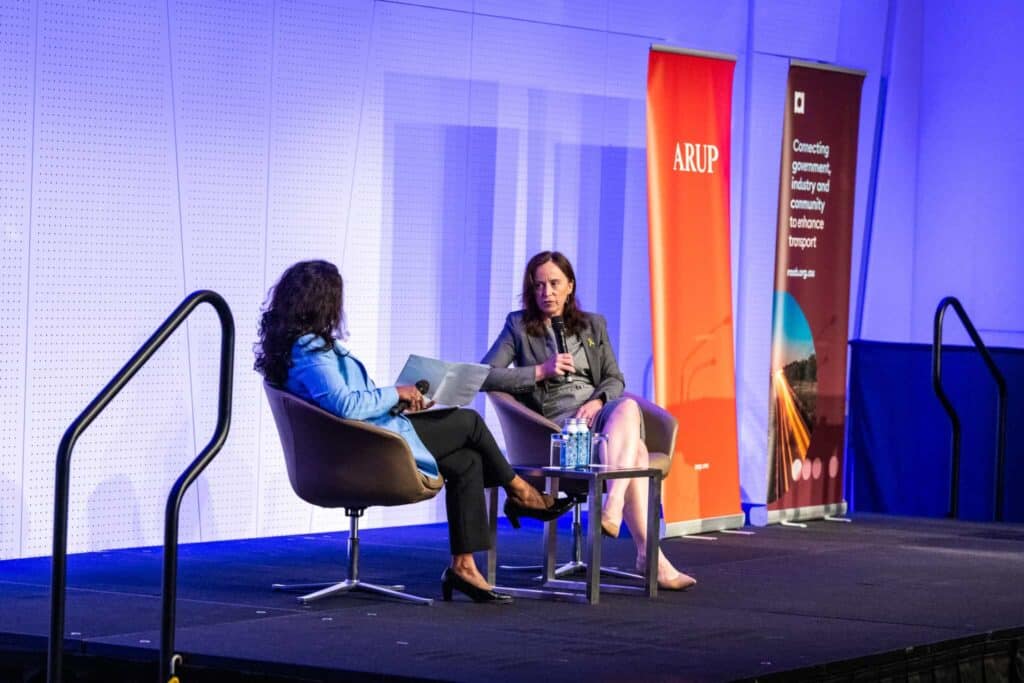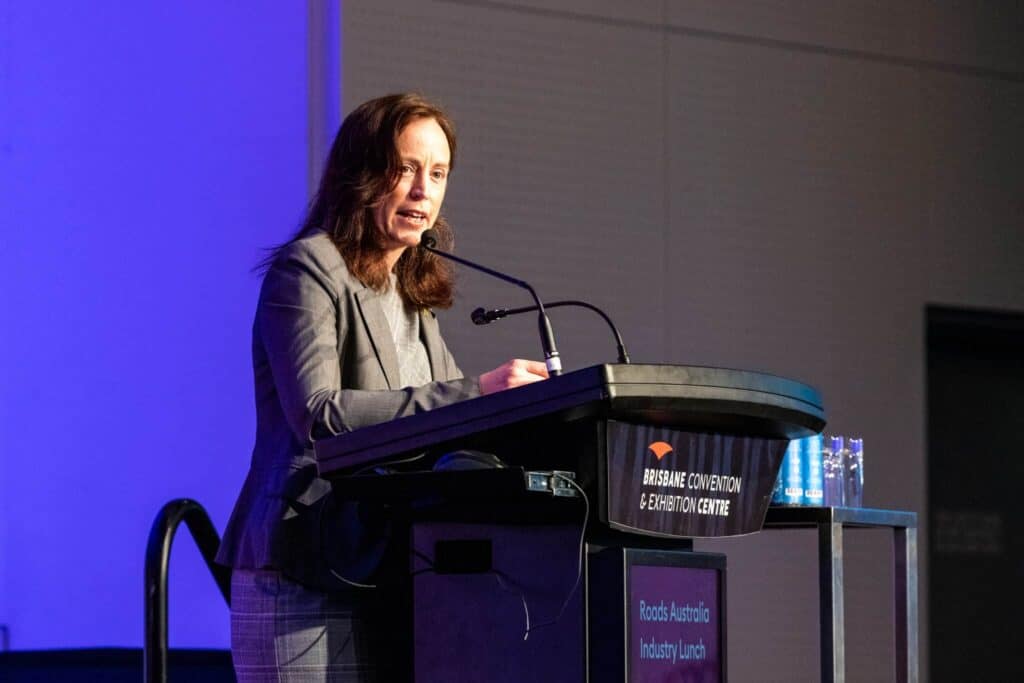Population growth over the next decade and demand on our transport networks and services throughout the Brisbane 2032 Olympic and Paralympic Games will place unprecedented demands on Queensland’s transport systems in coming years.
Director-General of Queensland’s Department of Transport and Main Roads (TMR) and Roads Australia (RA) Board Director, Sally Stannard is tasked with ensuring the state’s transport infrastructure will be ready to support the unique requirements that come with hosting the world’s largest event.
At a recent RA Industry lunch in Brisbane, Ms Stannard outlined how the state’s transport sector is working to meet the needs of a growing population, while leveraging investment for social outcomes and enhancing the social license of the industry.

Queensland’s infrastructure pipeline
South-East Queensland is growing at a rapid rate with Brisbane the fastest growing capital city in the nation.
Major investments to respond to this future demand include the Logan to Gold Coast Faster Rail, Direct Sunshine Coast Rail Line and Cross River Rail projects.
TMR expects the benefits of these projects to go beyond mass movement of people when considered alongside upgrades to crucial road infrastructure across the state.
“Mass transport in South-East Queensland will look completely different with those projects in place,” Ms Stannard said.
“Our Queensland Train Manufacturing Project will build 65 new six-car passenger trains at a purpose-built manufacturing facility at Torbanlea in the Maryborough region, which will increase the capacity of the fleet by 30 percent.
“That protects our highways and motorways for the valuable freight movement and movements that can’t be achieved by public transport.
“The big programs of upgrades on the Bruce and the M1 and the Gateway will continue in a staged way with a real eye for what can we deliver for growth in the region, particularly as we head towards 2032.”
The current Queensland Transport and Roads Investment Program from 2023-24 to 2026-27 includes a total of $32.1 billion in road and transport infrastructure investment.
Social license and community engagement
The major infrastructure investment being delivered by the Queensland Government is not without challenges, including the ongoing need to build social license with communities impacted by new transport corridors.
Ms Stannard discussed the importance of the ongoing commitment across the industry to create a more inclusive and diverse workforce.
Significantly, TMR is placing social outcomes at the centre of its work, ensuring that the legacy of infrastructure extends into communities and delivers wider economic benefits.
“I make no apology that government is seeking to pursue social outcomes from our infrastructure spend,” Ms Stannard said.
“The ability to work with communities is how you get your social licence for the change.”
As the infrastructure pipeline increasingly becomes one focused on delivering the renewable energy assets required to decarbonise the nation, Ms Stannard highlighted the importance of working closely with communities to build social license and achieve mutually beneficial outcomes.
Innovation & Productivity

Improving the productivity of the infrastructure sector is a major focus for government and industry nationally and for TMR, digitising operations is a core part of the agency’s response.
This includes transitioning from asset delivery to operational efficiency, leveraging technology to enhance network management and responsiveness.
Using new technologies will result in new opportunities for transforming traditional infrastructure models into dynamic, data-driven systems.
“When we look into the expected demands for Brisbane 2032, we will have to be operating this network to within an inch of its life to cope with that demand,” Ms Stannard said.
“Some of our ramp metering, some of our ITS technology is now well sought after so that’s exciting. But the opportunity in that space seems to be huge.
“We have a strong capability in asset delivery. We are now equally focussing on how to get the most from those assets – it is a key shift.”
The Queensland Customer and Digital Group within TMR leads and drivers a more digitally enabled and responsive government, invests in upskilling the community and business in digital capability and works with the Australian Government and telecommunications carriers to secure improve regional connectivity for Queensland.
The ongoing modernisation of transport from a TMR perspective includes service delivery, productivity gains through digitisation, and innovative new technology trials like those being undertaken on connected and autonomous vehicles.
Safety
Worker safety in both a physical and mental sense, remains a strong priority of TMR, particularly given the market capacity constraints facing the industry.
“We cannot have behaviours that take us backward in a culture we’ve been working so hard to create for so many years,” Ms Stannard said.
Ms Stannard also touched on the need to work collaboratively with all stakeholders, including the union movement, to create safer workplaces.
“We absolutely must have a dialogue with our workforce, and unions have a key role in that space. That dialogue is what we would expect to play out between contractors and unions, where they represent the workforce,” she said.
Regarding safety on the transport network, Ms Stannard talked about her role as Chair of the National Level Crossing Safety Committee and the impact meeting families impacted by level crossing incidents had on her.
Following a successful national gathering to discuss level crossing safety the committee is now steering work and bringing together the transport and logistics industries, where telematics is increasingly being used to enhance driver safety and regulators and other key stakeholders are focused on ensuring tangible action is taken to reduce incidents on level crossings.
Key takeaways
Ms Stannard reiterated the importance of collaboration, innovation, and social responsibility in shaping Queensland’s transport future.
From enhancing productivity to addressing climate change, the path forward requires a holistic approach that balances economic imperatives with environmental, sustainability, and social outcomes.
The conversation shed light on the multifaceted challenges and opportunities facing Queensland’s transport sector.
Through partnerships with industry, supporting innovation, and engaging communities, TMR is looking to chart a course towards a more resilient, inclusive, and sustainable transport future.